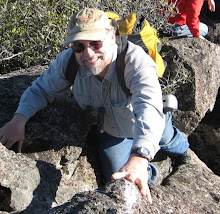I am writing a script for a World War II historical fiction based on a little known but decisive Battle for Bessang Pass in the Philippines, Northern Luzon 1945. This is a revenge story. By 1945, the Filipino resistance, reinforced with American supplies and weaponry, was finally strong enough to make their Japanese tormentors and occupiers pay dearly for 4 years of brutal occupation. No where else in Asia was the resistance against the Japanese as fierce as in the Philippines, a forgotten story of which few Americans are aware.
I lived in the Philippines from 1963 to 1964 when memories of the war were still fresh in the memories of Filipinos. I was influenced by their stories of the Japanese occupation and resistance.
First here's some background for my script! The Battle for Bessang Pass in 1945 was fought by a joint American-Filipino led guerilla army, the United States Armed Forces in the Philippines - Northern Luzon (USAFIP-NL), against the besieged forces Japanese General Tomoyuki Yamashita. The battle for Bessang Pass, at 5,000 feet above sea level in the Cordillera mountains, is now commemorated in the Philippines as the Battle Among the Clouds. When finally won, the victory swung open the northern backdoor to Yamashita's defensive mountain fortress.
A Time magazine article entitled Volckmann's Guerrillas published in July 02, 1945 first reported on this secret war:
"Some 20,000 Japanese retreating up the end of northern Luzon in the Philippines were suddenly stabbed in the belly, tactically speaking, then kicked in the rear. Thirty-five miles behind the front lines a phantom U.S. force sprang on the town of Tuguegarao and, captured a major Japanese airfield. Next day another force appeared 50 miles behind this force, at the end of the Jap retreat line, to nab the final escape port of Aparri and its airfield.
On the front line the fighting was more conventional, with the U.S. 37th Division striking fast and hard along the Cagayan Valley, rolling the Japs back in front of it eight miles a day. But the forays into the Jap rear and middle were largely the work of a first-rate guerrilla outfit and its blue-eyed, sandy-haired commander."
Following the fall of Bataan in 1942, a Major Russell M. Volckmann escaped with several other soldiers the night before the start of the infamous Bataan Death March and made his way to the rugged Cordillera mountains of Northern Luzon where he formed the USAFIP-NL. With the return of American forces to Luzon in January 1945, Volkmann's division strength guerilla army graduated from hit-and-run raiders to a standing army capable of fighting pitched battles against Imperial Japanese forces. Volckmann's USAFIP-NL was commandeered and attached to the U.S. 6th Army by Lieutenant General Walter Krueger. Decidedly impressed with Volkmann and short on troops in the far Northern Luzon, Krueger ordered Volckmann and his USAFIP-NL to take the Japanese-held towns of Cervantez and Bontoc. But first taking these towns meant taking the heavily fortified Bessang Pass. These orders were to project USAFIP-NL into a fight of three months' duration among the craggy ridges and high peaks of the Cordillera mountains.
There is almost a parallel between the USAFIP-NL fight for Bessang Pass and the civil war movie story Glory about the black 54th Massachusetts regiment. Bessang Pass was the Filipino resistance shot at glory, but unlike the 54th Massachusetts regiment, the USAFIP-NL guerillas won their battle. Also there is some similarity between Volckmann and William Wallace in Brave Heart. Like Wallace, history reveals Volckmann as a morally complex individual, both ruthless and compassionate, and charismatic enough to attract men willing to die for him and a lightening rod for their moral outrage. But unlike William Wallace, Volckmann survived.
About Me

- voyageur
- My blog voyageur is in the beginning stages of construction. In Canada, a voyageur was an expert guide in remote regions, esp. one employed by a fur companies to transport supplies to and from distant stations. Hence voyageur has become my name for this blog, symbolic of travel, exploration, and man's inner and outer quest for new frontiers. In my life, I've traveled from the equator to the arctic circle. Nothing stimulates me like new land under my feet. Stay tuned as this site develops.
Followers
Sunday, September 6, 2009
Subscribe to:
Post Comments (Atom)
This little known battle has been relegated to the backburner by major historians of WW II but this should be taught in our schools history classes as a crowning achievement of an almost all-Filipino military unit commanded by a West Pointer, Russell Volckmann and one of the founders of the US Special Forces routing the much-vaunted Tiger division of the Japanese Imperial Army at 5000 feet above sea level. For about 3 months, the all-Filipino forces fought the Japanese in these rugged mountains and by hand to hand combat routed the crack divisions of the Tiger of Malaya. The fall of Bessang Pass led to the final collapse of General Yamashita's forces in the northern Philippines and led to his arrest and justly-deserved execution.
ReplyDelete